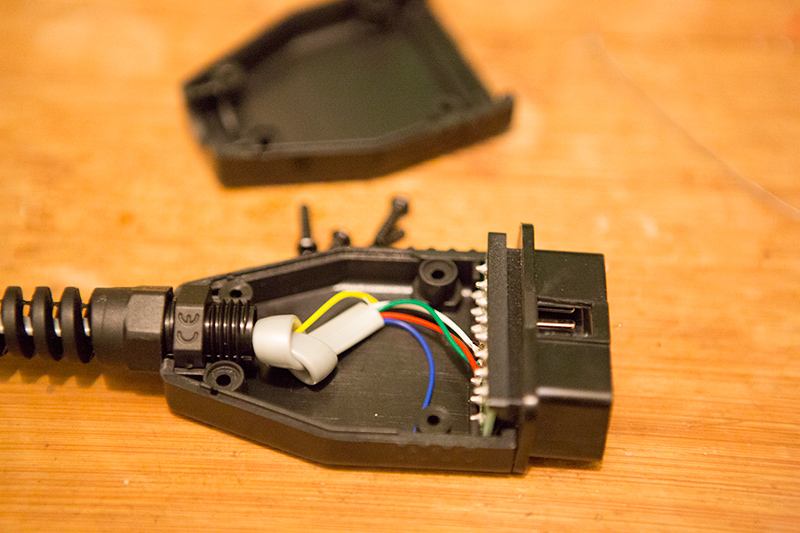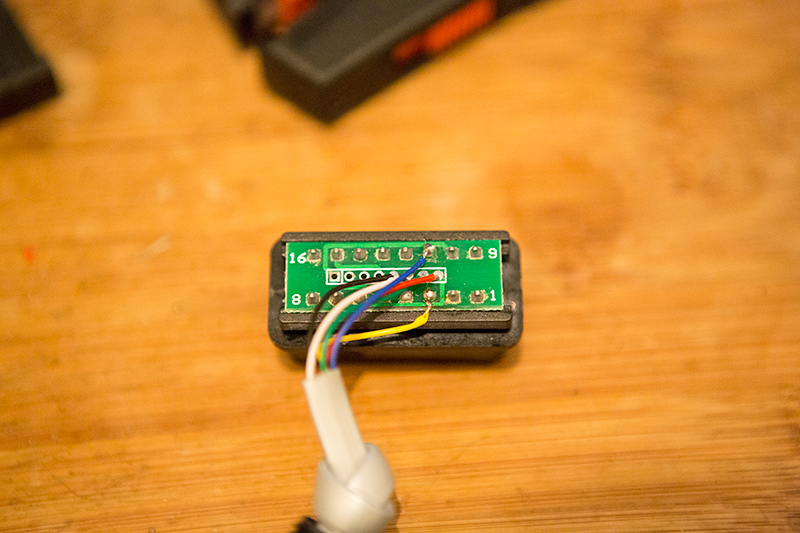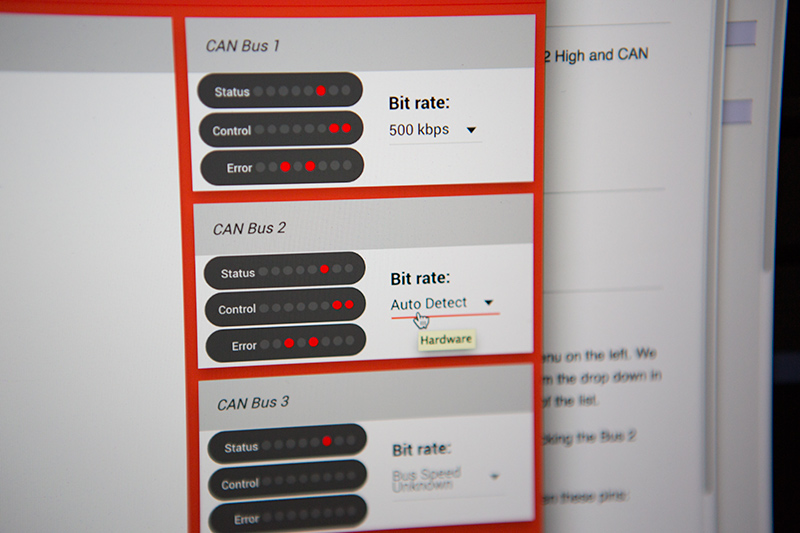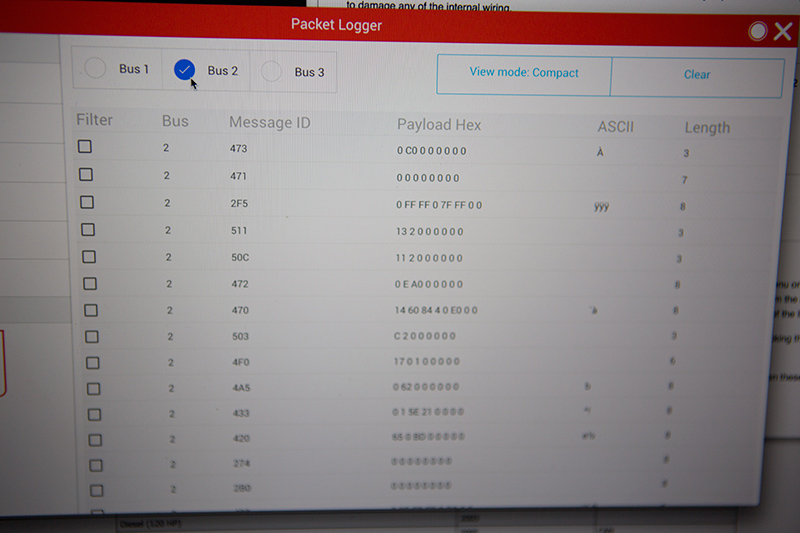Second bus with OBDII cable
- Quick Start
- Wireshark
- Second bus with OBDII cable
- Tapping into a bus
- Sensors (XGauge) Codes
- Bluetooth LE, Sensors and you
- Man in the Middle
Have a tutorial for your awesome CBT application?
Send it in!
Some vehicles will expose a second CAN bus on the OBDII port. In this tutorial we will cover how to attached the wires inside the ODBII Diagnostic connector so that you may use the CBT to sniff this second bus.
Please refer to Pinouts Guide and look up your vehicle before attempting this. You do not want to perform this modification if the expected pins on the OBDII Diagnostic port in your vehicle are not CAN.
In a Mazda3 the second CAN bus is exposed on pins 3 and 11. We will use those pins in this tutorial. Your application may vary.
Tools
- A CANBus Triple w/ OBDII cable
- Wire Stripper for 26 gauge wire
- Phillips head screwdriver
- Soldering Iron
Open the OBDII connector
Unscrew the 4 phillips head screws holding the connector closed. Then carefully separate the housing and be sure not to damage any of the internal wiring.

Solder Connections
Strip the sheathing off the ends of the Yellow and Blue wires by about 4mm. Those are the CAN Bus 2 High and CAN Bus 2 Low respectively.
Solder the Yellow (CAN2 High) to Pin 3. Solder the Blue (CAN2 Low) to Pin 11.

Reassemble
Reassemble the housing and replace / tighten the four philips head fasteners. Time to give it a test!
Test
Connect the OBDII cable to your car as described in Quick Start.
Launch the CANBus Triple App (more on that here) and navigate to the Hardware screen from the menu on the left. We need to set the correct bit rate for Bus 2. If you know the rate of the bus you've connect to select it from the drop down in the 'CAN Bus 2' tile. If you do not simply click the drop down and select Auto-Detect from the bottom of the list.

Now navigate to the Packet Logger screen from the menu on the left. Turn on logging for Bus 2 by clicking the Bus 2 toggle at the top of the screen. If your vehicle is powered on you should see data in the table!

If you're having trouble verify the connections with a multimeter. You should check connectivity between these pins:
| Function | CBT Side | OBDII Side |
|---|---|---|
| Yellow - CAN 2 High | Pin 5 | Pin 3 |
| Blue - CAN 2 Low | Pin 6 | Pin 11 |
Always verify the required pinouts before attempting. Their is no standard for this so be sure to double check the pinout for your vehicle.